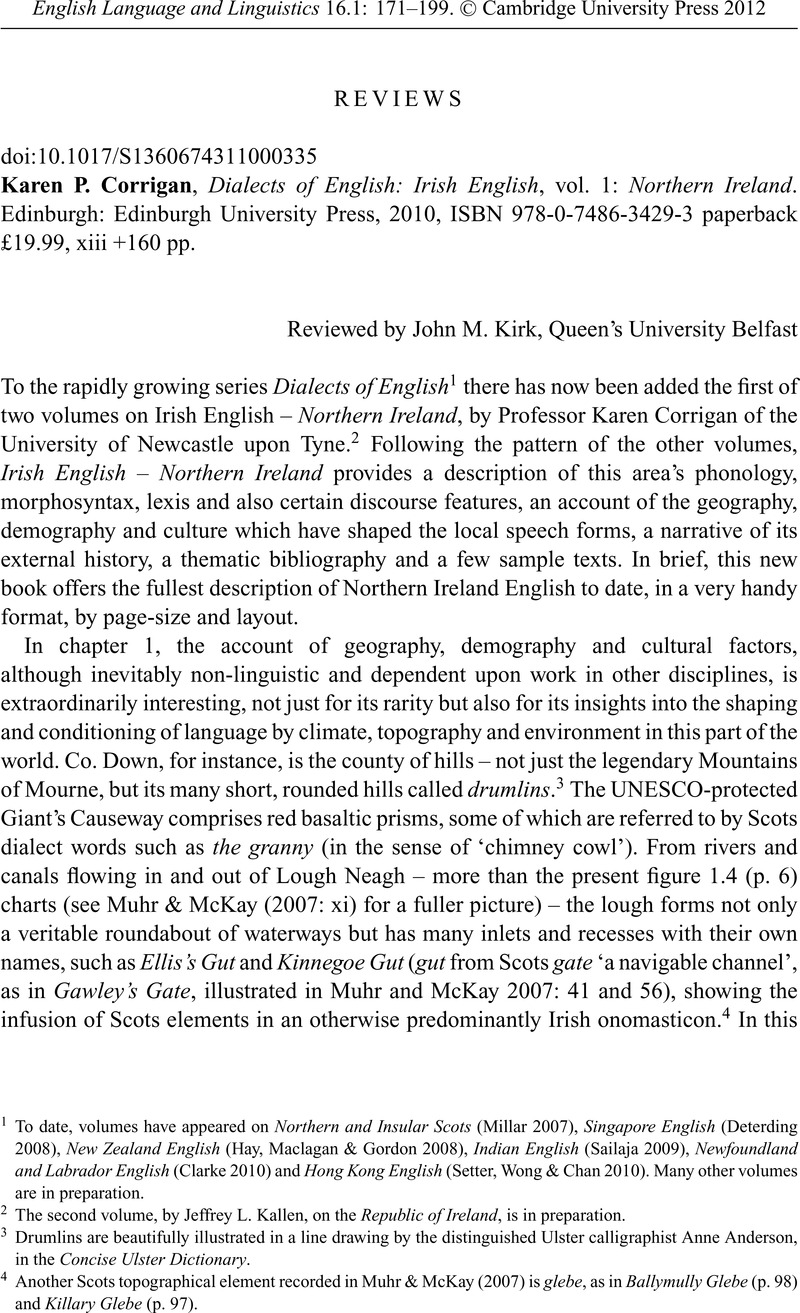Macafee, Caroline,
2002. ‘Lowland sources of Ulster Scots: Some comparisons between Robert Greg's data and
The Linguistic Atlas of Scotland (volume 3). In
Kirk, John M. and
Ó Baoill, Dónall P. (eds.),
Language links: The languages of Scotland and Ireland (Belfast Studies in Language, Culture and Politics 2),
119–32.
Belfast:
Cló Ollscoil na Banríona.
Google Scholar 